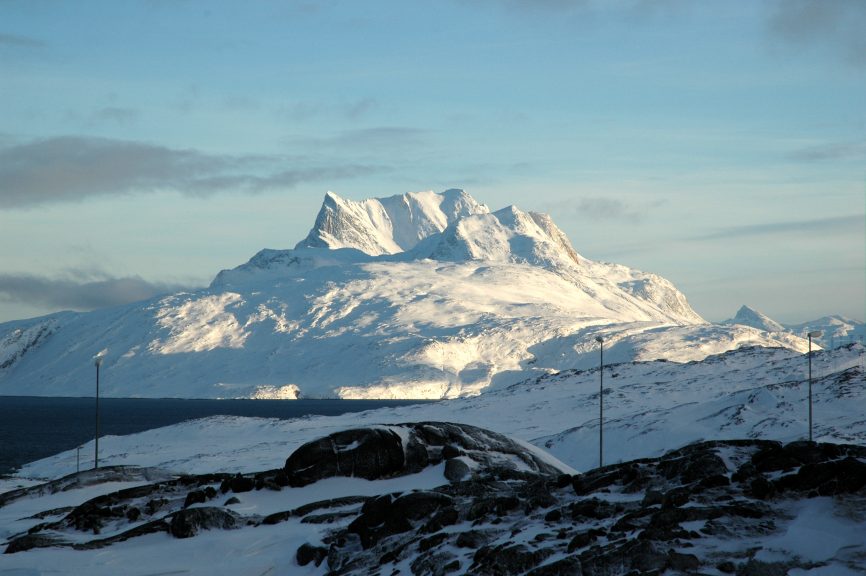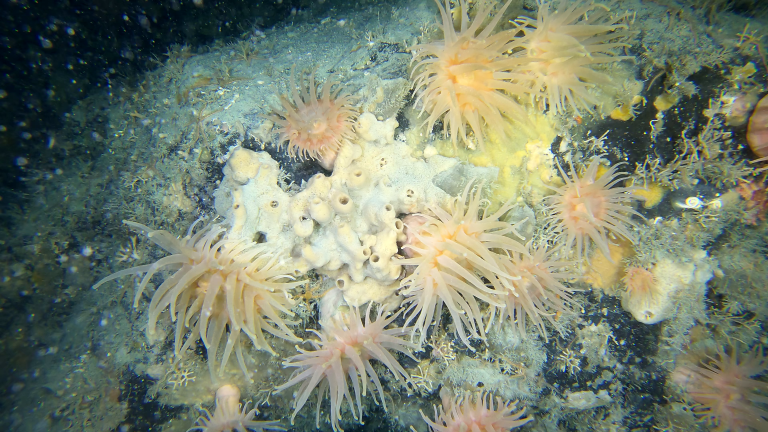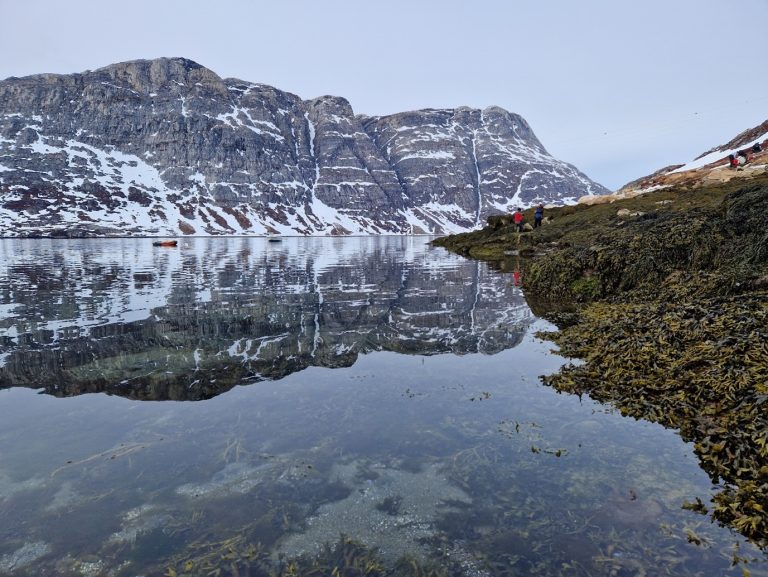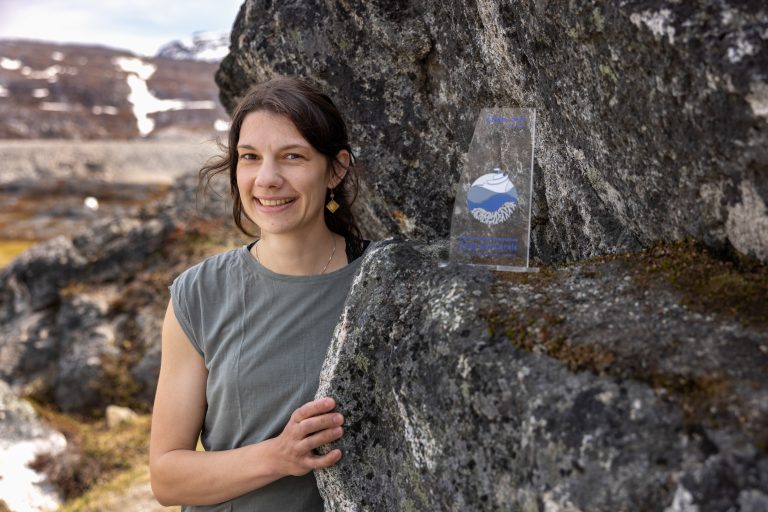Project Funding Breathes New Life into Monitoring Greenland's Seafloor
23.11.2023The Greenland Climate Research Centre and the Greenland Institute of Natural Resources have received funding of DKK 17.2 million for ..

To apply for courses in the Arctic Science Study Programme (ASSP), please complete the “Student Information” form below. After submitting the completed form you will receive an e-mail with details on how to proceed with register for the courses and other practical information.
The ASSP offers graduate (masters) and PhD level courses. The courses in spring form one full semester (30 ECTS). Applicants applying for a full semester are given priority, however, it is possible to apply for single courses. You can find more information about the courses under Arctic Science Study Programme (ASSP).

Did you know that Inuit has 69 different words and terms for sea ice? Probably very few people, who are not catchers, know this.
This is one piece of much information that can be found in the book ”Immap sikua pisariaqartipparput”, now published in four languages: English and three different Inuit dialects. The authors of the book have completely different backgrounds, scattered throughout the Arctic circumpolar area. They are Inuit representatives, the so-called bearers of knowledge on sea ice, and scientists from different disciplines. In the recently released books, Inuit knowledge on sea ice is documented, and thereby the parties have ensured knowledge sharing, and, not least, secured Inuit tradition for posterity.
The settlements that have participated in the project, are Avanersuaq in Greenland, Utqiavik in Alaska and Kangiqtugaapik in Canada. The book, with its 364 pages in the Greenlandic version, was first published in English in 2013. Recently, it was published in three Inuit dialects – Kalaallisut in Greenland, Inuppiartut in Alaska as well as Inuktitut in Canada. The books have been underway for 10 years.
The basis of the books is the scientific research project Siku-Inuit-Hila (Ice-Inuit-Weather/Universe). The primary goal of the project is to create a better perception of the Inuit understanding of sea ice, how they utilise it, and how they, who live of the ice, “read” it. The documentation consists of descriptions, illustrations and innumerable pictures.
Many catchers and the so-called bearers of knowledge from Avanersuaq (in the Qaanaaq area), Greenland, participated in the creation of the books, which was also the case in Utqiarvik and Kangiqtugaapik.
From the Climate Research Centre at the Greenland Institute of Natural Resource, scientist Lene Kielsen Holm participated in the scientific project management, together with her co-authors Shari Fox Gearheard, Henry Huntington, Joe Mello Leavitt, Andrew R. Mahoney, Margaret Opie, Toku Oshima and Jolie Sanguya.
Catchers as scientific colleagues
The research project Siku-Inuit-Hila was completed in close cooperation with catchers and bearers of knowledge in the mentioned Inuit areas. For example, in connection with the project, an expert group on sea ice was created in each of the three Inuit areas. The groups collected concrete information on sea ice, quality assured the collected data material, and much more. In Greenland, the expert group was led by catcher Toku Oshima, who lives in Siorapaluk. The groups worked together with glaciologist from University of Alaska, Andrew R. Mahoney. With him, the catchers developed a simple way to collect data on sea ice, which can be used in science. Thus, the local catchers collected information on sea ice thickness, characteristics, changes, and how Inuit people adjusted themselves to the changed conditions in the period 2006-2010.
Siku-Inuit-Hila has become a pioneer project
With the project Siku-Inuit-Hila, a new research methodology was introduced, a so-called transdisciplinary research discipline. The new in the discipline was that scientists with academic backgrounds systematically incorporate into their research a non-academic knowledge, handed down through thousands of years, from the bearers of knowledge. Scientific articles also contributed to the backbone of the book.
“The research methodology that we introduced with the project Siku-Inuit-Hila is completely new and without precedence. That is why we have already started to make a scientific description of the methodology, so that others also can make use of it”, Lene Kielsen Holm explains.
The book was the elders’ demand
The books are only a reality thanks to the elderly bearers of Inuit knowledge. They had made it a demand that their knowledge would be documented in book form.
”We are pleased to be standing with the books today. And we hope that the valuable inputs that we have received from all of the participants – also the elderly who have passed during the process – in the project, have been presented to everyone’s satisfaction. We hope that our contribution may be considered a small part of the documentation of Inuit identity”, Lene Kielsen Holm explains, and continues:
”In the book, everyone can acquaint themselves with our ancestors’ knowledge, and we hope that children and young people will be inspired and feel enriched by their knowledge”.
Free copies of the books have been distributed to all schools and educational institutions, among others, in Greenland.
Today, Lene Kielsen Holm travels the world in connection with her work to introduce the methodology from the project Siku-Inuit-Hila and to pave the way for more Inuit participation in scientific research projects.
For further information, please contact:
Scientist at the Climate Research Centre at the Greenland Institute of Natural Resources, Lene Kielsen Holm, phone 361200 or leho@natur.gl

The Greenland Climate Research Centre and the Greenland Institute of Natural Resources have received funding of DKK 17.2 million for ..

Macroalgae or seaweed are dominating rocky coastlines globally. Even here in Greenland, we can see small kelp such as the ..

The dark, cold deep sea harbors many unseen treasures, one of which is corals that most people only associate with ..